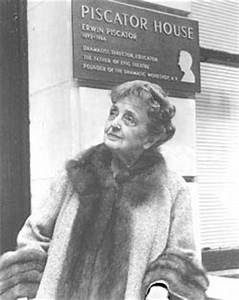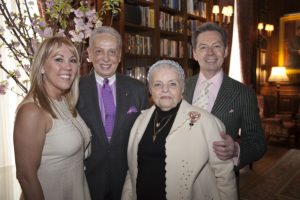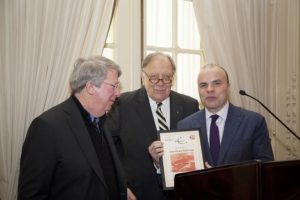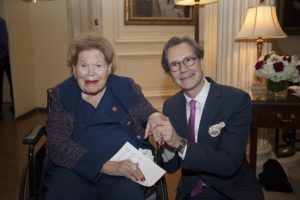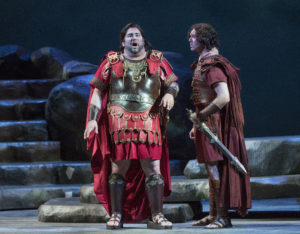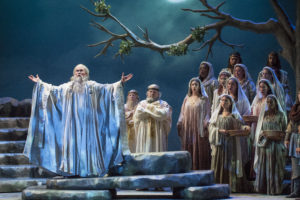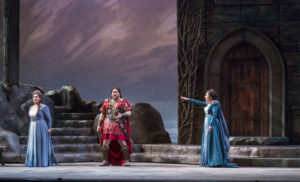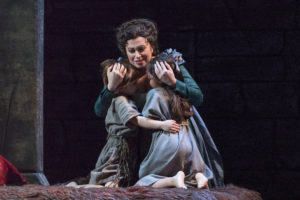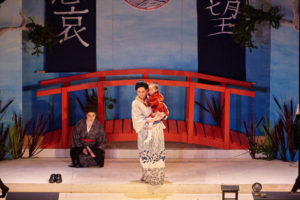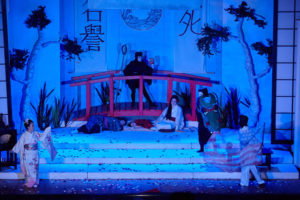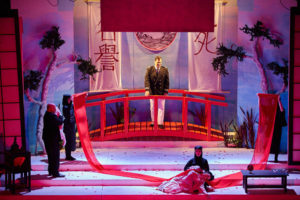A book review by Nino Pantano
Commendatore Aldo Mancusi who is the founder and curator of the Enrico Caruso Museum in Brooklyn has added his book with the assistance of author and Vice President of the museum, David Mercaldo, PhD. Many have profiled the great tenor since his tragic and untimely death at age 48, in Naples, Italy on August 2, 1921. The book is dedicated to the memory of Michael Sisca, who with his father Marziale Sisca, provided so much memorabilia to the Enrico Caruso Museum. Marziale’s brother, Alessandro Sisca wrote the lyrics to “Core ‘ngrato” (“Ungrateful Heart”) using the name Riccardo Cordiferro. Enrico Caruso, a splendid caricaturist, drew caricatures free for “La Follia di New York” as a favor to his friend Marziale Sisca, the Editor and his son Michael Sisca.
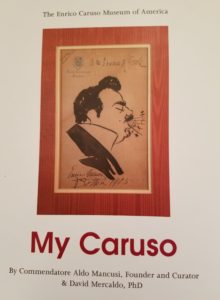 The book contains many caricatures drawn by Enrico Caruso and many personal conversations held with Michael that are first hand memories of Caruso the man. Pictures of busts, death masks, letters, records, phonograph horns, jewelry, ties, Caruso’s black and white shoes, documents, silverware, canes, phonographs, cylinders, recordings, an opera piano and a movie theatre that shows his silent film My Cousin. (1918)
The book contains many caricatures drawn by Enrico Caruso and many personal conversations held with Michael that are first hand memories of Caruso the man. Pictures of busts, death masks, letters, records, phonograph horns, jewelry, ties, Caruso’s black and white shoes, documents, silverware, canes, phonographs, cylinders, recordings, an opera piano and a movie theatre that shows his silent film My Cousin. (1918)

Michael Sisca, while a teenager, was present at Caruso’s last recording session in September 1920 and told me that the greatest of tenors, who just returned from a month long tour of Cuba and the United States, had the beginning of his final illness that day, in the form of a cold. His great recording of “Rachel, quand du seigneur” from La Juive, was sung under duress and one could hear Caruso breathing heavily near the golden finale. Sisca, a charming man, always spoke of his friend Caruso and remembers being in bed since it was nighttime during one of his father’s soirees. Enrico Caruso was there, Puccini, Toscanini and a total of thirteen distinguished guests. Caruso insisted they get Michael from bed to join them because thirteen was bad luck. So young Michael Sisca sat with Puccini, Caruso and Toscanini at that unforgettable dinner.

Members of the Caruso family from his first “wife” Ada Giachetti (Mistress) and his American bride Dorothy Park Benjamin, have visited the museum as well as Eric Murray, Gloria’s son and Caruso’s grandson and his charming wife Lynne. Eric, a wonderful gentleman, is a board member of the museum.

Aldo describes how he first became acquainted with the tenor through his father Evaristo who collected his recordings and his mother Marietta who possessed a lovely soprano voice. There is an original caricature of Caruso’s father Marcellino, donated by Andrew Farkas who wrote the book, “Enrico Caruso, My Father and My Family” with Enrico Caruso Jr. Mr. Farkas tells the story of Pierre V. R. Key, Caruso’s friend and biographer who saw Caruso weeping backstage after singing Canio in Pagliacci. The great tenor said, “Caruso is a damn fool. He feels too much!” There are pictures of the Enrico Caruso postage stamp. I met Enrico Caruso Jr. (1904-1987) at the Postage Stamp ceremony in the late 1980’s at The Metropolitan Opera House. We attended with friends the late Cuban-American baritone and Caruso aficionado Alfredo and his wife Audrey Villoldo. Enrico Caruso Jr. age 82 died a few weeks later (April 9, 1987) He too, was a lovely man – R.I.P!
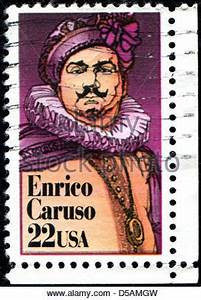
On pages 86 and 87 are the richest and most poignant gift. It is the last photo taken of Caruso on July 19, 1921 in Sorrento, Italy where he went after partially recovering from his illness. (Lifting his robe and showing his still painful wounds in a photo for Dr. Antonio Stella in New York) A piece of scenery fell on him at the Metropolitan Opera during a performance of Samson on December 3, 1920. He had pains on his side but the house doctor, Dr. Horowitz said it was merely intercostal (between two ribs) neuralgia and taped him up. At the Brooklyn Academy of Music (BAM) in Elisir D’amore on December 11th, 1920, Enrico Caruso began bleeding from his throat and the audience begged him to stop. He collapsed backstage and Met Manager Gatti-Casazza said he had an apparition that this was the end. Surprisingly, Caruso sang three times more in great pain, at the Met that month.
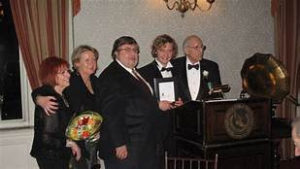
On December 24th, 1920 Caruso sang Eleazar in La Juive. The photographer Mishkin impulsively took his picture backstage and that was Caruso’s last photo at the Met. That night, Caruso went to his apartment for Christmas supper and began screaming in pain. He was heard many floors below. The doctors operated on him several times, removing a rib, probing deep areas of infection and a lifesaving transfusion. After the transfusion Caruso asked, “Am I still Italian?” Straw was added to the streets below his apartment so that sounds of horse or car traffic would be silenced. Fifty pounds lighter Caruso, his bride Dorothy and baby Gloria sailed for Italy on The President Wilson on May 28, 1921 from Pier 7 in Brooklyn. He waved to the cheering crowds telling them he would come back “and sing, sing and sing!!!” This film footage still exists. Caruso spent a happy two months at the beautiful Grand Hotel Excelsior Vittoria in Sorrento, Italy. Friends took him on an exhausting tour of Pompeii and his late mother’s old doctor probed his wounds, possibly causing a relapse. Caruso sent a touching letter to Dr. Stella, who he remembered from New York telling him that he still had persistent pain in his side. He opened his robe for a photo of his wounds and sent them to Dr. Stella in America. Dr. Stella received the letter and photo the day after Caruso died. Caruso died on August 2, 1921 in the Hotel Vesuvio on the way to Naples for an operation. There is a caricature of Dr. Stella drawn by Caruso and a copy of his $15,850 dollar bill for the operation which was “shaved” of $850 at Caruso’s request donated to the Enrico Caruso Museum by Michael Sisca.

Leaving America for Naples, Italy Aboard the Woodrow Wilson
Brooklyn’s Pier 7
Aldo Mancusi received a copy of the letter and the photo, unexpectedly from a member of Dr. Stella’s family. They are mentioned in the book and it was very sad indeed. Penicillin, not yet discovered, would have saved him. But like Abraham Lincoln, Caruso died in his prime, no decline in his magnificent voice (Despite his heavy smoking of Egyptian cigarettes) and remains unsurpassed.
A few years ago in May 2011, Aldo Mancusi got a phone call from 92-year-old Dorothy Alleva from Brooklyn, NY telling Aldo that Enrico Caruso and his wife Dorothy were her godparents. Her parents, Ernesto and Micalina Alleva, owned a restaurant in Manhattan called Villa Manfredi. Caruso and Dorothy loved the restaurant and seeing that Micalina was pregnant said, “If it’s a girl and you name her Dorothy we will become her godparents – well, that is what happened. The baptism papers and photographs show it all. Even the beautiful dress that Dorothy Caruso purchased can be found at the Caruso Museum. Caruso was loved and that is only one small example of his kindness, generosity and largess.
Aldo’s museum, now thirty-five years old, evolved over time and when a tenant left, Aldo was able to use even more space and to give lectures. Artist Marguerite Celesia created a beautiful “sign in” book with Caruso as the Duke in Rigoletto on the front cover. I remember WQXR Opera radio host George Jellinek signing in. Aldo’s wonderful wife Lisa always supported and accompanied Mancusi to many Caruso areas in Naples where they befriended one and all. Many musical and political figures have attended the museum and Aldo Mancusi, like the great Caruso, is a “Commendatore” of the Italian Government. In 1997, former Mayor Rudolph Giuliani helped Aldo celebrate Enrico Caruso Day at Merkin Hall in New York City where a proclamation was given. Great grandson Riccardo Caruso sang a Caruso favorite “M’appari” from Martha by Frederich Von Flotow.

Commendatore Aldo & Lisa Mancusi
Photo by Anton Evangelista
MetOpera tenor, Marcello Giordani, visited as did both Caruso families. Former Brooklyn Borough President, the ebullient Marty Markowitz listened to Caruso’s “Over There” at the museum with the former Italian Consul General Natalia Quintavalle.

The Enrico Caruso Museum
New York City Opera bass and Brooklynite neighbor the late Don Yule and his wife artist Jaye Adams visited the old phonographs and recordings and found them to be a great source of fascination. The mini-theatre is named after Michael Sisca and Met Opera soprano Licia Albanese. (1909-2014) Licia Albanese also contributed her Madama Butterfly costume and other items from the Metropolitan Opera. Chairs and old Met Opera wall panelings were gifts from the late board members Enrico Aloi and Joseph Puglisi. They were fans and friends of the late soprano Rosa Ponselle who was a Caruso protege. There is a lovely photo taken by my wife Judy of Mme. Albanese at age 104 joyfully laughing to see her friends Aldo and Lisa Mancusi. A few decades before, the effervescent cable television opera host Lina del Tinto and husband Harry Demarsky introduced Aldo and Lisa to Judy and me and it was a wonderful moment.

Board member and opera lecturer Lou Barrella and his wife Kathleen, volunteered their talents and efforts for the museum; Giuseppe Sarcona and Maria Valenti helped to translate into Italian, Mancusi’s daughters Kim Collins and Cindy Borriello are valued board members and Anthony Mancino, artist and illustrator from The Readers Digest with his beloved wife Grace who is now with Caruso in Paradise.
Aldo Mancusi and board member, Vice President and author, David Mercaldo, PhD have created a mini-masterpiece in this beautifully written and crafted publication. Linda Mercaldo, like Lisa Mancusi gave their talented spouses the freedom of time to create this wonderful tribute to Enrico Caruso and we thank them for that! The book is almost 100 pages of memories, stories, photos, hopes and dreams, colors, caricatures. His over 200 recordings from “Celeste Aida” and “Pagliacci” to “O sole mio” and “Core ‘ngrato” with their message of loves joy and sadness bring out humanity to its fullest and make us all uplifted to a heavenly realm.
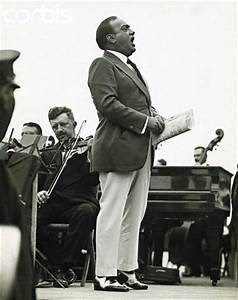
Enrico Caruso, from Naples, Italy, conquered the world with “Vesti la Giubba,” the first million selling record. Caruso was held as an idol and example for the millions of Italian immigrants who were made proud by the voice of gold that emerged from the old phonograph horn to give them pride and hope. Not only the opera “swells” at the Metropolitan Opera where he sang over 600 performances in the house from 1903 until 1920, loved the man and the voice, but Caruso loved people of all backgrounds. The man on the street heard his big-hearted message of humanity through song through the Victor Record Company and his many personal kindnesses. Enrico Caruso sang over 20 performances at Brooklyn Academy of Music with the Met on tour and also sang at the police games and a Liberty Loan Rally at Sheepshead Bay Racetrack in Brooklyn on Labor Day 1918. Aldo Mancusi holds forth the banner that gave light to the world. The great sorrow remains that Enrico Caruso did not live long enough to enjoy his wife Dorothy and daughter Gloria. In the book, Aldo Mancusi takes Enrico Caruso on a tour of his museum and knows that he would be pleased.
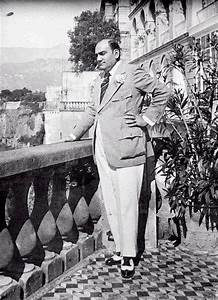
The book is available through The Enrico Caruso Museum of America and you can email Commendatore Aldo Mancusi at [email protected]. Phone-718-368-3993. The seventy-five dollar price is a truly worthwhile investment! It is like a carriage ride to an exciting past, a past that still lives through the resounding voice of the great Enrico Caruso. This “foot in the past” surely gives hope for the future. Visit the museum by appointment only at 1942 East 19th Street in Brooklyn and see for yourself!


